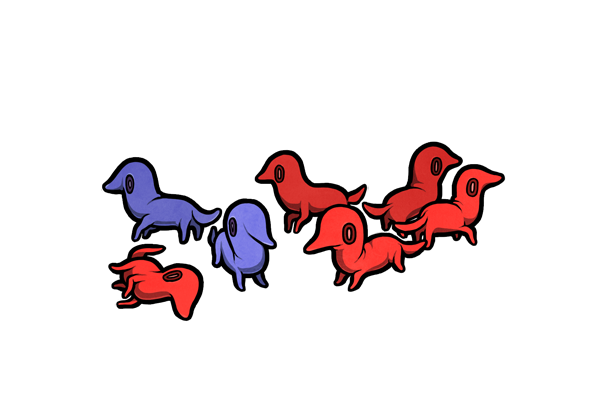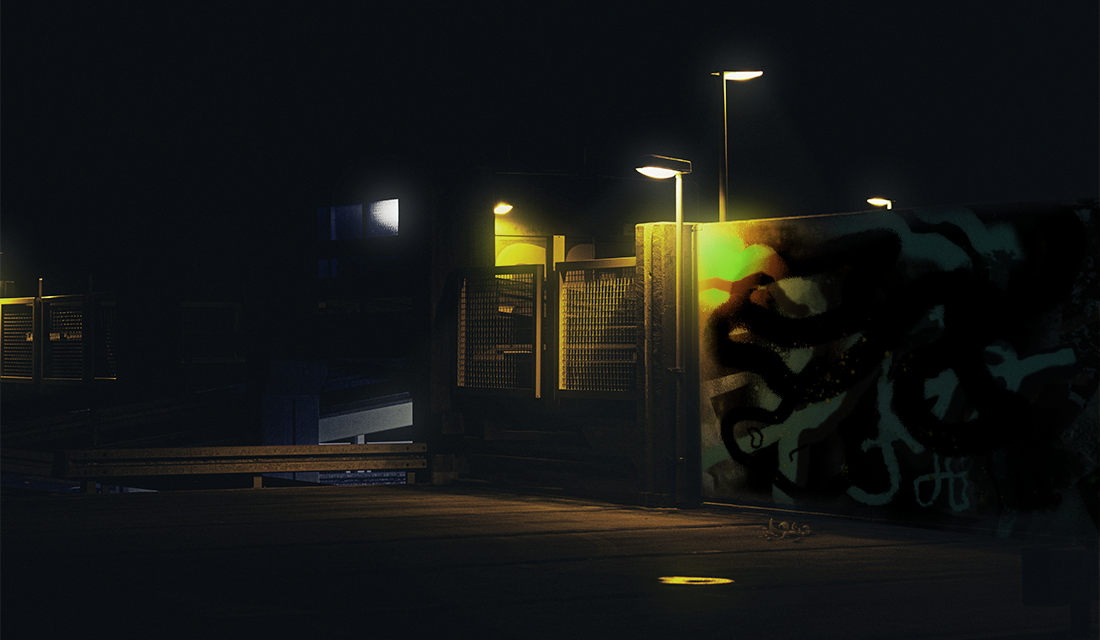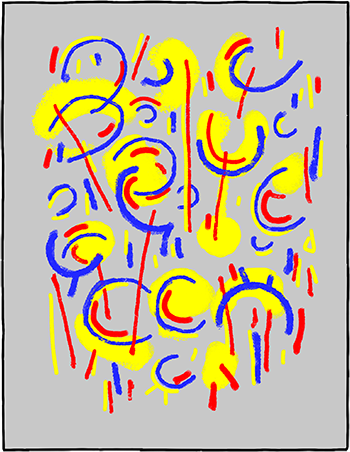

polyderi
the tokens
prefix poly suffix deri
esperficietiinitis esparvunitifini
physical appearance
The polyderi /ˌpɒlɪˈdeɹɪ/ is miniature stranger that resembles a rounded rubber toy. Its colors are so soft and saturated, both at once, though its exact appearance varies between (but not within) populations.ὁ Its hollow body is composed of a flexible rubbersol of one fifth of an inch in diameter. Aside from its ensuing respiratory properties, this substance is otherwise unremarkable.
ὁ Within a city, the majority of polyderi (99%) present with two main color variations, in roughly even ratios; these colors seem completely random. Furthermore, one percent of individuals display "rare colors", with the likelihood of any individual rare color's reappearance being less than one and a million.

displayed:
polymoni (highslats subversion),
polypinx (xanadu variant),
polypinzi,
polypolyderidri,
polydondo,
polydronel.
When squeezed, the polyderi emits a high-pitched squeak from the tip of its snout (this and any other sounds being a by-product of physical activity, and not indicative of any communicative function). Despite the stranger's lack of a mouth or any other opening, this nose-tip does appear to fulfill a respiratory function, with the intake of air felt on the skin at a distance of half a hand's width, and the stranger sputtering when smothered.
The strain cannot heal from injuries, and when pierced, deflates within a minute.
a silence that does not interrupt the background sounds.

environment and generation
Populations of polyderi appear on bridges, rooftops, or other high-altitude overlooks. The generation of polyderi exhibits a significant preference for tall buildings, foggy conditions, and contemporary development, but eschews bright lights and loud sounds in favor of more tranquil conditions.
The polyderi generates in the vicinity of previous infestations, leading to the appearance of varicolored populations as individuals pool𐐀 into a larger arrangement.
𐐀 but even with the margins and the gutters clogged, you can still enjoy watching the polymer colors as they mix and do not blend.
behaviour and effects
The polyderi's disposition is unconsciously spectatorial. It is exclusively found in groups. Only 3-20% of polyderi within a group are capable of movement. These walk through the group like wind-up dogs, pushing against the rubbery sides of neighbors that give no response. Though it may wander the perimeter of the group's "space", even the most exploratory of individuals will not stray far from its companions, unless moved by an outside force.
But, the groups of polyderi always do get broken up.
Even if it's able to move on its own, it's pretty much just a toy. Most of them can't even stand up again once they've been knocked over, and so whether individuals are blown away by a strong breeze, washed into a gutter by a storm, or grabbed one-by-one by strays, bystanders, or collectors, groups tend to become displaced from their companions over time.


interactions with sensitives
Proximity to the polyderi pulls the eye muscles towards a location within a four mile radius in which a sensitive has died (of any cause). When the sensitive faces away from this location, muscular strain can occur as the pupil points to the far edges of the sensitive's vision, forcing the sensitive to turn to face the spot. This action cannot be overcome with either strength or concentration, but stops once the sensitive leaves the close proximity of the polyderi. This effect can be weakly felt at a distance of up to one-sixth of a mile, leading to eye strain and involuntary twitches.
The polyderi displays no interest in sensitives, and does not react to their actions.
aging and death
At the end of its life, the polyderi crumples inward onto itself with a squeak and a final twitch. Its corpse turns hard and breaks apart into small, crusty, pea-shaped fragments over the course of several days.





